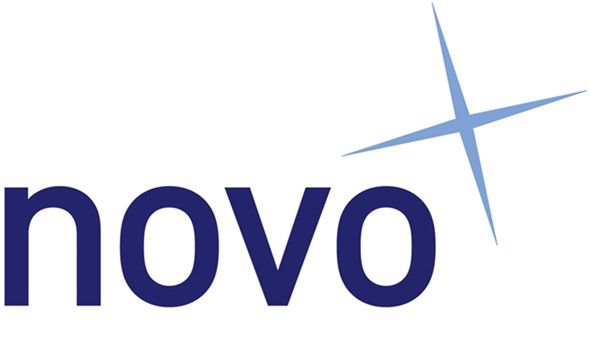Culture over remuneration: How to build a workplace culture appealing to senior executives

What does building a positive workplace culture mean?
- To build a company with strong cultural foundations.
- A business that thrives on the collaboration of its employees.
- A company that attracts and retains top executive talent with ease.
You can’t go far wrong with those goals.
Increasingly, improving culture in the workplace is one of the most important factors in attracting and retaining senior executives and promoting high levels of productivity, even more so than salary and perks.
A 2019 Glassdoor study revealed that 77% of people consider a company’s culture before applying, and 56% say that culture is more important than salary when it comes to job satisfaction. In other words, if you’re not investing in building an attractive culture, you’re probably missing out on the top talent.
Indeed, on a larger scale – a business culture that is based on mutual trust is essential for a functioning and thriving economy. As Mark Casson asserts in The Economics of Business Culture, a critical level of mutual trust and cultural cohesion is needed to prevent economic meltdown.
Anything that has this kind of impact on the national and international scale, must also be critical at the individual business level.
This report is intended to be more than just a simple list or outline of things that create a good workplace culture and an environment that attracts the best senior executives. The intention is to help you, as a business owner or executive, to build a thriving, vibrant and attractive culture, with practical advice on how to achieve this.
Workplace culture? It’s an emotional thing…
A common mistake is to confuse job perks with culture.
Yes, perks are nice. Free coffee. A comfortable staff room. Maybe a pool table or other entertainment. Perks like these may temporarily raise people’s mood, but are they the key to a successful workplace where people are motivated to work their hardest and achieve success?
Perks that are in line with company values can certainly enhance employee satisfaction. But they don’t work in isolation.
The best way to motivate people is to give them meaning, purpose and a sense of excitement. And the key to achieving that is to build a thriving company culture.
Meaning. Purpose. Excitement. Great, but where do you begin?
Where do you begin to improve culture in the workplace?
Research shows that if you want to improve office culture, you need to look at the underlying emotions.
A study by the University of Warwick showed that happy workers are more productive. When Google implemented more employee support, happiness rose, creating a 37% increase in employee satisfaction and increased productivity.
It makes sense that if you have a happy and productive workforce, then meaning, purpose and excitement will follow.
But happiness is a difficult thing to measure. And it’s even more difficult to deliberately create happiness in a workplace. To improve workplace culture, there are some strategies that should be followed and certain conditions to be met.

Creating the cultural conditions for happiness in the workplace
MISSION AND VALUES
Getting the mission of your company right is critically important. You want your company vision to resonate with the personal goals of individual executives.
A Gallup report puts it like this:
“A business’ mission defines what it stands for — its purpose and the reason for its existence. Mission declares the difference a company seeks to make in the world… To instil a passion for the company’s purpose, the best leaders in the world hold managers accountable for addressing employees’ basic engagement needs.”
The last part about “addressing employees’ basic engagement needs” is revealing, as this is fundamental to building a strong company culture.
A simple strategy to improve workplace culture and assess the effectiveness of your company mission is to ask your leadership team – “What are you paid to do?”. If your mission and values are clear, their answers should reflect it.
If not, don’t worry – according to the Gallup report, 41% of employees are unclear about their company’s mission. At this stage you either need to redefine your mission to make it more meaningful or coach your leadership team on the values of the company and how to achieve them.
The other thing to ensure is that the actions of your company align with your mission and values. It’s no good to say that you want to make the world a greener place if you hire outside bodies that are known to pollute the environment, for instance.
Staying true to your mission can be difficult, especially if it means changing existing practices or introducing new guidelines. But the importance of having a strong and visible mission cannot be underestimated, so don’t neglect it.

FREEDOM AND FLEXIBILITY
Freedom in the workplace may not sound like a recipe for success but allowing a certain amount of creative freedom and flexible working can generate a happy atmosphere, even in a corporate environment.
When compared to applying a “micro-management” approach, a leadership style that promotes free thinking and decision-making leads to innovation. Some companies hold regular innovation days, where employees set aside their usual work, gather in teams and come up with ideas that will help improve productivity and efficiency and create success.
Allowing more freedom and flexibility will help to engage employees, which has been shown to be a vital ingredient to success. A Harvard Business Review report stated that disengaged employees are 37% more likely to take time off and are 60% more likely to be error-prone in their work.
On the other hand, highly engaged employees drives company growth, with a reported increase in productivity of up to 21%. Another Gallup report released in 2017 revealed that companies with high engagement gain 10% in customer ratings and see a 20% sales increase on average.
There are numerous ways to improve freedom and flexibility for employees and promote engagement. Remote working is an obvious one and is becoming increasingly popular. Flexible working hours, job-sharing and increased autonomy in decision making are other ways to increase flexibility.

HEALTH AND WELLNESS
We live in a world that is becoming more and more aware of the correlation between physical health and mental wellness. This transfers into the workplace. If people are physically fit and healthy, they will be more mentally alert and produce better results.
It stands to reason.
But if there was any doubt about it, a recent American study showed that every dollar invested in corporate wellbeing programs equated to a seven dollar saving in costs related to absenteeism.
The importance of wellbeing may be even more important in the C-suite. The executive lifestyle of long hours, travelling, meetings and incessant workload can take its toll, both physically and mentally. A culture of prioritising health and wellness can counteract these issues and prevent burnout.

The millennial workforce is very aware of the importance of health and wellness. In fact, 54% of millennials say that a good company wellness program is very important when choosing a workplace.
This can be as simple as encouraging healthy eating by providing free fruit snacks or providing free gym or subsidised gym membership. Many companies have invested in on-site fitness equipment to allow employees to exercise as part of their daily work routine.
Open forums on mental health or access to counselling services can be a big help in relieving the stress epidemic. Talking therapy has been shown to relieve stress and reduce time off work, especially for those in positions of high responsibility.
COLLABORATIVE WORKING
A Stanford University study demonstrated the benefits of collaborative working, with employees working in teams sticking to a task for 64% longer than those who worked alone. It was also shown that there was a marked increase in focus, stamina and an increased success rate.
To create a collaborative culture, there needs to be a focus on communication. This doesn’t necessarily mean more meetings. It means engendering an atmosphere in which co-workers feel like they can collaborate without permission. Teams can be flexible and fluid under this type of company culture. This can be liberating and create a tide of innovation.
In the C-suite this could mean that the CEO and CTO and other directors get together to discuss their own problems and seek common solutions. This kind of problem-solving teamwork can translate to huge success if it is followed throughout a company and becomes part of the overriding culture.

TRANSPARENCY
As mentioned earlier, a critical level of mutual trust is needed for business to thrive. Trust is built through honest and open relationships. Therefore, this part of the company culture ties in with the collaborative approach mentioned above. But it places an emphasis on transparency and honesty.
All too often, transparency (and collaboration) is lost in the competitive atmosphere of corporate workplace, especially in the C-suite.
A good way to encourage the growth of transparent and authentic relationships, is to practice the following:
- Make information freely available – this is especially important across departments and management levels.
- Allow people to take responsibility – delegate authority to other leaders and managers and allow them to take autonomous decisions, where appropriate.
- Encourage open communication – set aside times and create forums where people can communicate openly.
- Lead by example – make sure your word is your bond and you honour commitments.
EMPOWERMENT
The final piece in the jigsaw of a productive company culture is empowerment.
Feeling empowered, is by its very nature, powerful. The results you get from a team of empowered employees far exceed those of a team that feel oppressed or lack motivation.
You could say that empowerment is actually a result of all the other factors mentioned above, as that is what they are designed to do.
But there are some proactive steps you can take to encourage employees to feel even more empowered.

One way to create empowerment, especially at the executive level, is to encourage accountability. Once roles have been defined and objectives set, make sure that everybody knows what they are accountable for.
This is the opposite of micromanaging goals and deadlines. Let your employees know that they are accountable for their own success. Encourage them to be self-led and to track their own progress, and to make these results visible. When it comes time to reward success, you can reward those with the highest levels of accountability, as well as those that achieved the highest productivity.
To sum it up, empowerment comes from good leadership. This is reflected in the fact that at companies deemed to have strong and successful company cultures, 90% of staff have full confidence in their leadership team.
Overcoming problems with company culture
Inevitably, there will be roadblocks when you attempt to change or shift company culture, even if you want to improve it.
The main obstacle will be getting everybody on board. There will be people that are resistant to change. When this occurs, it’s important to have a strong company vision and mission. Keep referring back to this when you meet resistance. This will de-personalise the implementation of a new culture, making it about success, not changing people’s individual behaviour.
You’ll probably find that most people will come on board when they begin to see the benefits of the new way of doing things. If there are still some that don’t, it may be time to question whether they are the right fit for your business.
When things are difficult, and it doesn’t seem that change is forthcoming, stick with it. All the research points to the fact that improving company culture is one of the main factors in business success.
Reasons to improve culture in the workplace
It may be a good idea at this point to reassert your goals and remind yourself why you want to create a positive company culture. Here are some of the possible reasons:
- To attract and retain the best executive talent
- To promote higher levels of productivity
- To increase the reputation of the company
- To improve employee loyalty
- To improve employee job satisfaction and happiness
- To expand and grow your business in a competitive global economy
- To fulfil your company mission and live true to a set of values
There are dozens more, but that should be enough to get you through any dark times.
Key Takeaways
A positive company culture doesn’t just happen.
It needs to be nurtured.
This means a certain amount of planning needs to go into creating a strategy to improve workplace culture, from getting the core mission statement and values right, to creating a happy and trusting environment.
The power of company culture shouldn’t be dismissed. It has been shown to be more important to overall job satisfaction than pay. In the corporate world where money talks, this may come as a surprise to some business owners.
At the end of the day, you can’t argue with the fact that companies with a strong culture see a fourfold increase in revenue.
The truth is – if you want to attract and retain the top executives and employees, as well as increase revenue, you simply must invest in a company culture that creates loyalty and trust.












